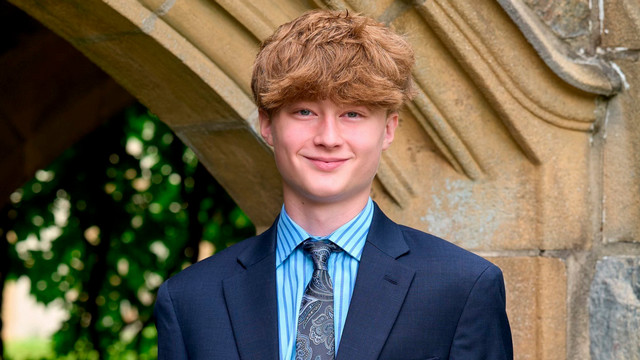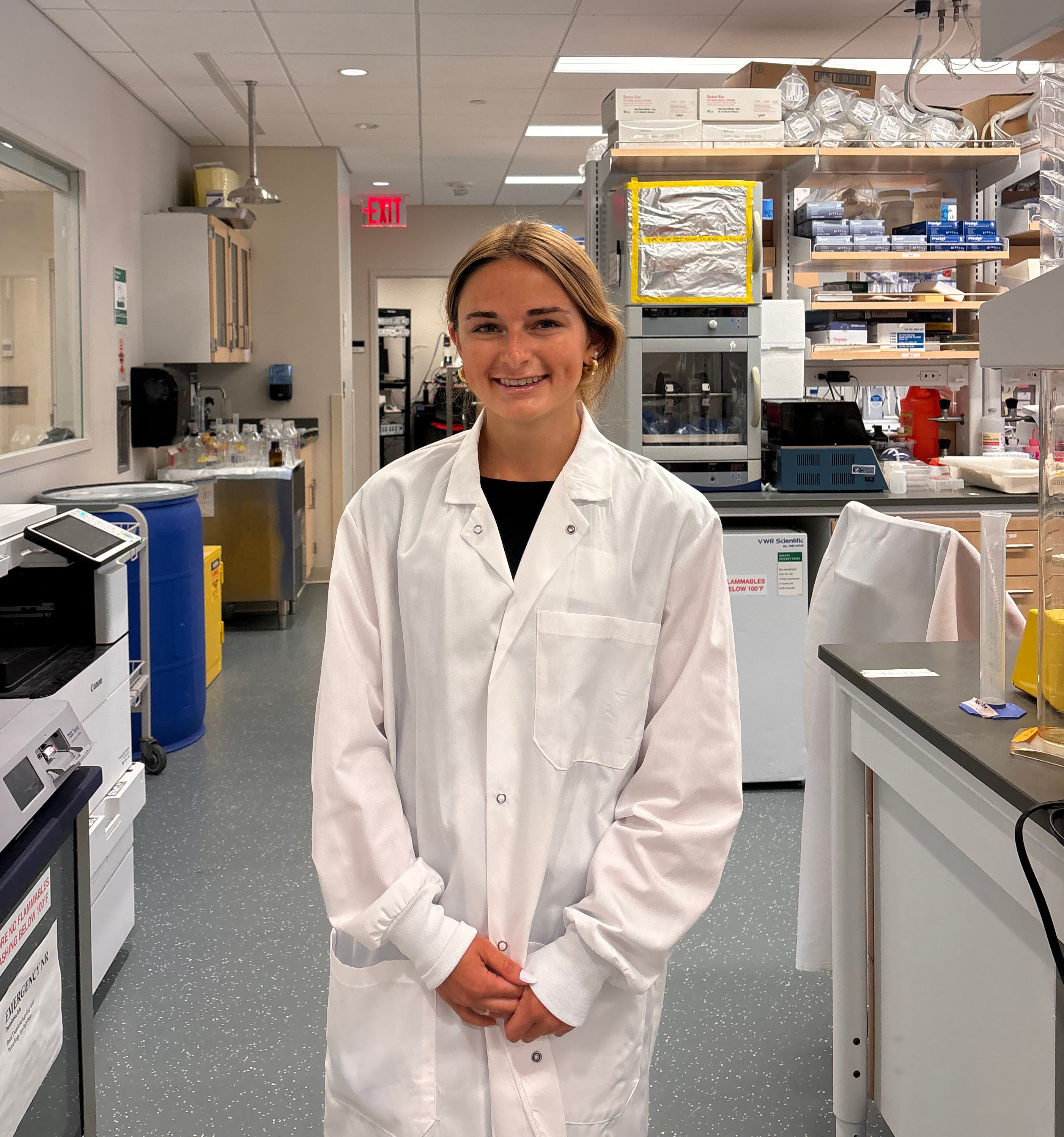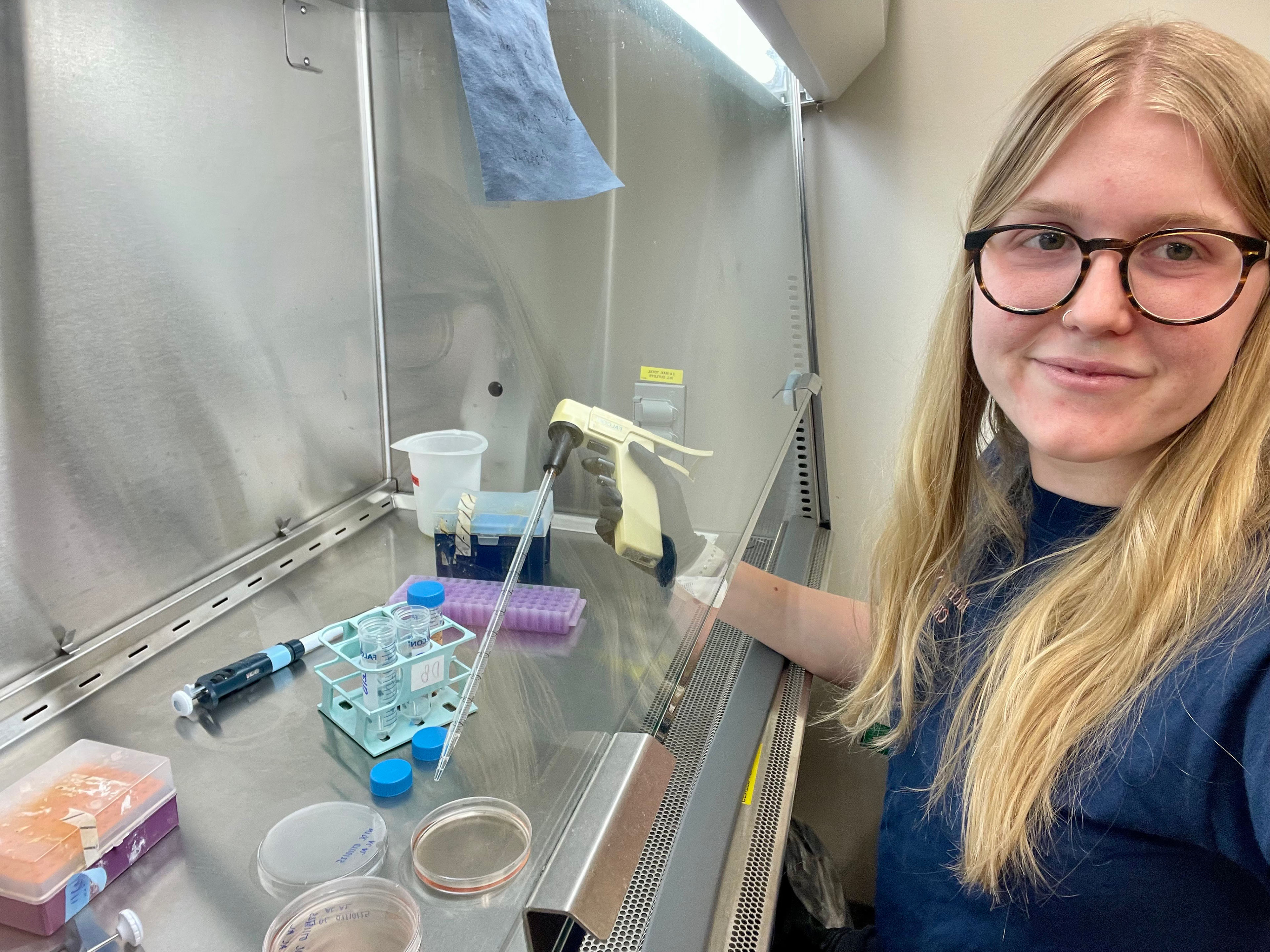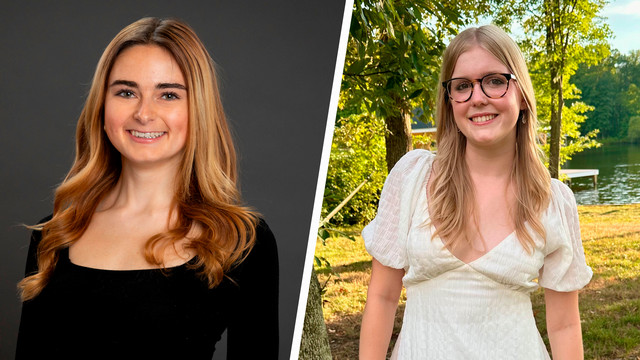
Richmond undergrads gain hands-on experience in top research institutions
Student Experience
Mikaila Farrell, a senior biology and psychology major, doesn’t view medicine and research as a binary choice. Her internship with Dani Dumitriu, a pediatrician and neuroscientist at Columbia University, provided her the chance to see how the two fields intersect.
Farrell already had experience working in Professor Kelly Lambert’s lab, investigating ways to mediate stress in rats and reviewing their neurobiological and behavioral responses.

Mikaila Farrell assisted with research on inflammation markers in the teeth of children born during COVID-19, examining the link between stress during pregnancy and higher rates of autism in children.
In Dumitriu’s neuroscience lab, Farrell helped with research on inflammation markers in teeth. In a previous study, Dumitriu’s team discovered that high levels of inflammation and stress during a pregnant woman’s third trimester could result in higher rates of autism in children. Dumitriu is now following women who gave birth during COVID-19 to see the impact of that stress on their children.
“Those kids are now about five years old and should start to lose their baby teeth next summer,” Farrell said. “The idea is that we’ll be able to look at their teeth and see if there are lines of inflammation and then follow the children to see what sort of impact that has.”
Before this, Farrell, who is from Metuchen, New Jersey, admitted she didn’t know that teeth could be a chronological inflammatory marker. “I didn’t know that you could find out so much information from them,” she said.
Her days in the lab ranged from reading previously published studies by Dumitriu and other researchers to better understand their techniques and processes to cryosectioning teeth by cutting thin slices of frozen tissue for microscopic evaluation.
She also tapped into sage advice from Dumitriu and her colleagues as she considers her next steps after graduation.
“Before this summer, I had an image of a doctor and an image of a researcher in my mind,” Farrell said. The internship opened her eyes to the many diverse backgrounds that can do both.
“It definitely fueled my passion for research. Even if I choose to become a medical doctor, I want to make time to both see patients and conduct research. I enjoy the hands-on aspect of seeing patients, but I also appreciate the idea of discovering new insights,” she said.
Exploring the options
When Anna Lozano transferred to UR in her sophomore year, she planned to pursue a career in healthcare but didn’t want to limit her options. Now a senior, she chose to major in biology, which would allow her to fulfill the prerequisites needed to apply to medical school while also exploring other career possibilities.

At the Children's Hospital of Philadelphia, Anna Lozano dissected mice and collected bone marrow cells to figure out the signaling pathway that leads to cells that combat infection.
Lozano took Mechanochemical Cell Biology taught by biology professor Omar Quintero-Carmona. The course is designed for juniors and seniors who want to preview a biology graduate program. It included reading relevant journal articles and discussions about research processes.
Quintero-Carmona noticed her interest and encouraged her to continue gaining research experience during the summer. He introduced Lozano, who is from Havertown, Pennsylvania, to research colleagues at the University of Pennsylvania and Children’s Hospital of Philadelphia.
“Over spring break, I interviewed with researchers and toured a few labs,” she said. “That’s when I met Dr. Janis Burkhardt.” Burkhardt is the chief of the Division of Cell Pathology at CHoP. “She’s amazing. Just like Dr. Quintero-Carmona, she values teaching people and mentoring students.”
Lozano spent 10 weeks as an intern in Burkhardt’s lab supporting research on dendritic cell migration. Dendritic cells, Lozano explained, travel throughout the human body searching for signs of infection. When they encounter an infection or injury, the cells then move to the lymph nodes where T cells are activated to combat the infection. “Another undergrad and I were examining proteins downstream, trying to figure out which signaling pathway occurs when these dendritic cells are activated,” she said. “What, on the very small microbiology scale, is happening inside the cells that tells them to go into the lymph nodes?”
Lozano participated in all stages of the process, from dissecting mice and collecting bone marrow cells to culturing dendritic cells and analyzing results.
In addition to the hands-on lab experience, Lozano said working on a small research team also allowed her to ask colleagues about their professional journeys as she considers her own.
“I’m still interested in healthcare and the medical field,” she said. “But it was great to hear about what research interested them and how they got to the projects they are working on.”


